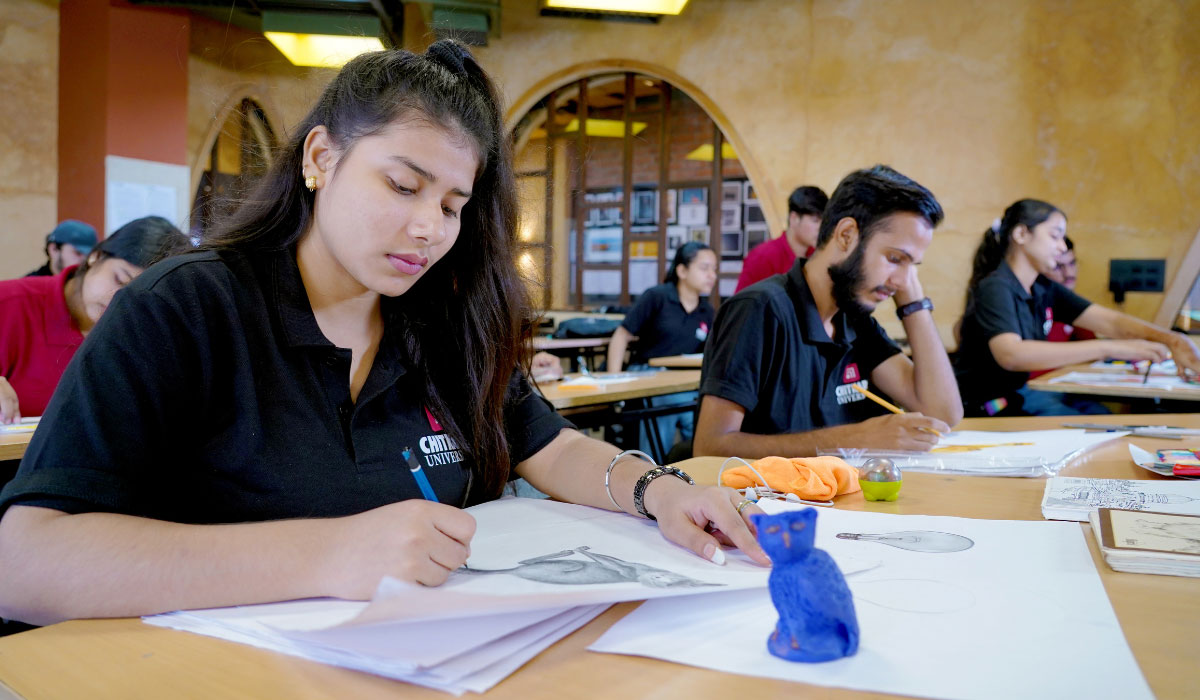Organizations and individuals can effectively communicate their ideas, engage audiences, and build their brands with the aid of effective visual communication. Professionals in Graphic Design and Communication Design both bring valuable skills and knowledge to the area of visual communication. It’s useful to know how the two disciplines vary when choosing which one to study or pursue professionally. In this article, we define graphic communication and graphic design and examine how they contrast and complement one another.
What is Graphic Designing?
Graphic design is an interdisciplinary field that carefully applies aesthetic principles to give visual content structure and meaning. Both an idea and a tangible object may be described by it; more specifically, it may refer to a field of study, a profession, an industry, a good or service that can be bought, etc.
The primary goal of graphic design is utilizing aesthetics to make sometimes complex material easier for an audience to understand. Take a peek at a few typical illustrations of the various sub-disciplines of graphic design to get a better understanding of this:
Logo design- A logo’s purpose is to convey a brand’s character
Web/app design- effectively conveys interactions, written material, and navigational signs.
Print design- conveys the hierarchy and significance of written material.
Cover Designs- Cover art conveys the substance of a book, album, or magazine.
Advertisement design- Design of an advertisement conveys the intended use of an object under consideration for purchase.
Label/packaging design- Communicates the level and quality of the product.
Also Read: The influencing world of advertising
Which courses can you do to become a Graphic Designer?
| Certificate & Diploma Courses: |
|
| Undergraduate Courses- |
|
| Master Courses: |
|
| Doctoral Courses: |
|
Job Description of a Graphic Designer
A Graphic Designer is expected to perform various design-related duties depending upon his skillset and the nature of the business he is working for. To figure out the requirements for the design, they frequently consult with customers or art directors. They will combine pictures, drawings, and text using design software to make a concept come to life. Additionally, they might have to show their concepts and revise later draughts based on comments from clients or colleagues.
Here are some basic responsibilities a typical Graphic Designer is expected to perform-
- Review design briefs to identify needs.
- Give customers advice on attracting target audiences
- Determine the most effective methods to convey the client’s vision while adhering to design best practices.
- Using illustration, photo editing, and layout tools, create designs.
- For communication materials such as websites, logos, signs, books, magazine covers, annual reports, ads, and social media posts, choose colors, images, typography, and layout.
- Concepts ae illustrated by creating rough iterations of the art arrangement, font size, and style, and then presenting them for review.
- Create draughts for the client to examine, then make changes based on their comments.
- Before incorporating their suggested changes into revised designs, present designs and ideas to clients or Art Directors.
- Testing the visuals on different platforms
- Making changes to designs based on input from stakeholders and clients Making sure the finished graphics and layouts are aesthetically pleasing and consistent
- Before publishing, check the finished graphic designs for mistakes.
- Know the most recent design ideas, resources, and innovations.
What is Communication Design?
Communication design can be defined as using visuals strategically to express information. Design has become even more pervasive in our world as technological developments demand the graphic design business to change. Quality and creativity of the design have become the most crucial part of the marketing strategies which has increased its competitiveness.
Communication design aims to leave an impression on people’s understanding or inspire a shift in behavior or attitude by communicating messages to targeted audiences for predetermined goals. The communication may not only be visual but also multi-sensory or interactive.
The world is undergoing rapid change. Graduates must be skilled and flexible around a variety of specialized activities and media, including web design, branding, interaction design, UX and UI design, illustration, advertising, media design, social technologies, photography, graphic design, and art direction to excel.
Must Read: Scope of communication design in India
Which courses can you do to become a Communication Designer?
| Certificate courses |
|
| Undergraduate Courses |
|
| Postgraduate Courses |
|
Job description of a Communication Designer
Communications designers are in charge of producing visual material that aids in narrative or idea transmission. They frequently consult with customers to decide what elements should be incorporated into the design, and they might also work closely with authors and other creatives to produce the finished product.
Here are some primary responsibilities a typical Communication Designer is expected to perform-
- Designing webpages or mobile applications, including putting together user interface designs and wireframes.
- Creating marketing materials like trade show booths, infomercials, direct mail campaigns, brochures, pamphlets, fliers, and advertisements for print or broadcast media.
- Design the company’s identity packages, brochures, yearly reports, and signage for public relations campaigns.
- Putting together printed or digital presentations to communicate information about goods or services.
- Creating graphics for paper or digital media, such as billboards, brochures, magazines, packaging, and ads.
- Analysing target groups’ behavior to find the best strategy for a project or campaign.
- Review advertising efforts to make sure they adhere to industry norms and regulatory standards for truth in advertising.
- Data analysis to spot trends and offer suggestions for growth.
Conclusion:
Based on the information provided, now you can easily decide which profession is suitable for you. In the current digital scenario, both fields are hiring smart and creative job seekers massively since the industry is getting bigger and bigger. As the competition is very high, a well-equipped degree program will help you stand out from the crowd.
Chitkara University offers an upgraded undergraduate program B.Des in Communication Design which will help you in career advancement and will also provide you with industry exposure. The University is associated with multiple top-ranking businesses in the Industry which will add value to your journey as a designer.






